Angola. Santa Teresa Education Centre. Educate in values.
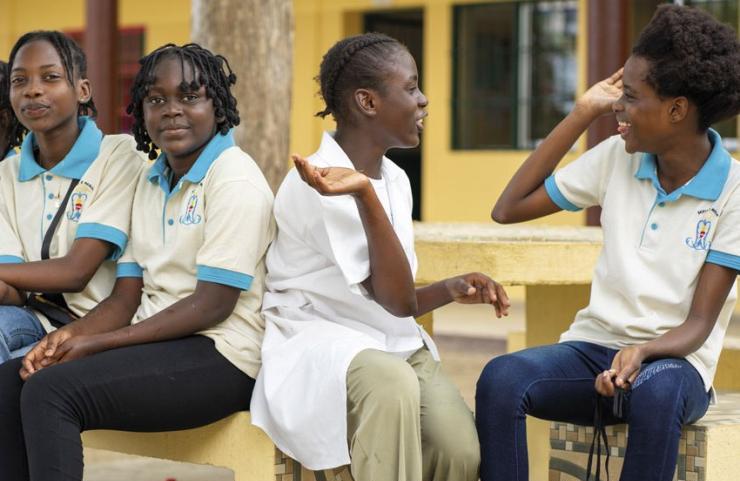
The Sisters who belong to the Slaves of the Divine Heart run a school in one of the poorest suburbs of Luanda. Educate to create the future for this country.
The education centre is located in the Palanca neighbourhood of the municipality of Kilamba Kiaxi, a poor part of the Angolan capital where asphalt is scarce and where simple single-story houses line both sides of the dirt road. Like other neighbourhoods in Luanda, Palanca grew rapidly, without any urban planning, to accommodate people fleeing the civil war that ravaged Angola from 1975 to 2002 between the MPLA, the ruling party and the UNITA guerrillas.
Entering the Santa Teresa educational centre which has been run by the religious congregation the Slaves of the Divine Heart since 1996, we see the boys and girls in their official school uniform, a cream-coloured t-shirt with blue edges, the colours of the institute.
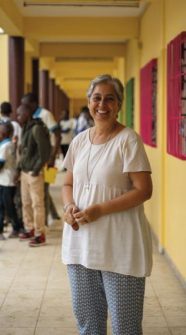
Sister Carlota Martinez, director of Santa Teresa Education Centre.
Spanish Sister Carlota Martinez welcomes us with a big smile. Sr Carlota remembers that “When we arrived here, there were only two very simple houses and the children sat on the floor or on cans because there were no tables or chairs. We started looking for funds so that the children could have a good education.”
In a few years, with the support of a number of international organizations, they built the various buildings that
make up the school.
The number of students at the Santa Teresa School increased as the facilities grew. Today there are around 825 boys and girls aged between 5 and 15 accompanied by around 45 people including teachers and service staff.
Enrolment is open to everyone even if, as Sr. Carlota reminds us: “We keep a quota reserved for Catholic students”. After registration, there is an entrance exam and only those who pass are admitted. The monthly fee is of approximately 3,500 kwanza (around 4 euros) per month. Says Sr. Carlota: “The fee is lower than that required in most schools in Angola of the same level. However, those who cannot pay regularly are not expelled as in other schools but finish the course in the hope that before the final academic results, their families will complete the payment. Furthermore, the school grants scholarships to around fifty students with the condition that it be used for school and which can be 50% or 75%, depending on the family circumstances of each one.”
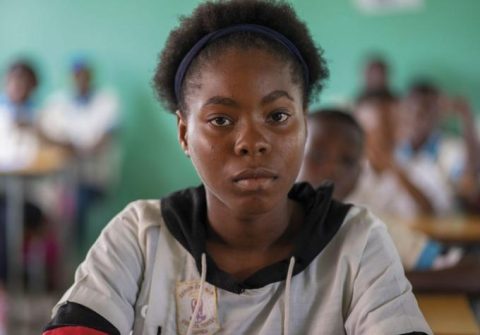
A student at the Santa Teresa Educational Centre. There are around 825 boys and girls between the ages of 5 and 15.
Santa Teresa School covers all stages of compulsory education in Angola, which begins at age five with a children’s course; continues with the primary cycle, from the first to the sixth grade, and ends with the first secondary cycle, seventh, eighth and ninth grades. After that, those who want to continue their studies after a period of preparation choose between professional or university training which, depending on the faculty, can last three or four years.
On paper, everything looks perfect, but in this 2023/24 year, millions of Angolan boys and girls have not been able to enrol in school. The government only invests 2.4% of GDP in building schools or providing teacher training and it is not clear in which language the teaching is to be carried out because in some places Portuguese is used whilst in others different local languages such as Umbundu, Kikongo or Kimbunduare used. “The big cities are better served with regards to education -acknowledges Sr. Carlota -, but the provinces are completely abandoned. Public school teachers are not accompanied which means that you will often find 80 or 90 students in a single primary class. What can a teacher do with so many children? Textbooks which, in principle, are free up to the sixth grade, are often found being sold on the streets while none arrive in schools.”
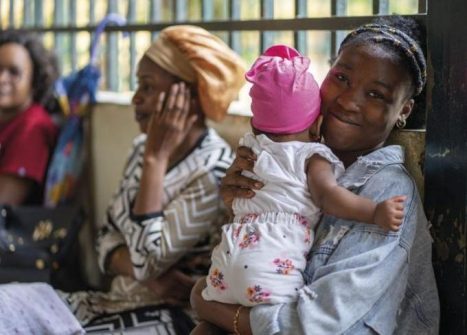
A mother holds her daughter as she waits to be seen at the clinic on the school grounds.
From the beginning, the Sisters tried to create a family atmosphere in the school, being close to the students, getting to know their families, and dealing with the preparation of the teachers. An important element in this training journey is helping to bring about the meeting and dialogue between teachers and parents. The Sisters take great care of the religious aspect because as Sr. Carlota says: “Educating means transmitting the person of Jesus”
Most educational centres run by the Catholic Church in Angola are public-private since the state selects, provides and pays the teachers. In the case of Santa Teresa, only 70 per cent is paid by the State, while the other 30% are contributions paid by parents or other organizations.
In the Santa Teresa educational centre, only 20% of the students are Catholic, the rest belong to the Protestant churches or one of the many Christian sects that exist in large numbers in Angola. For Sr. Carlota “the vast confessional variety is not a problem: we have a lot in common and no one is far from what we offer here”. She adds: “We start with the little ones, we talk about Jesus Christ and his values so that they can later freely choose their way.”
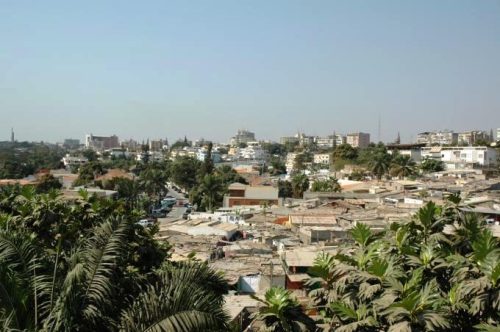
View of Luanda. “We remain here, helping to build the future for this country through education.” File swm
Sr Carlota feels the importance of presenting the Good News of Jesus Christ which she considers the greatest service that the school can bring to Angolan society, especially in the religious context of the country, of which the missionary is very critical: “There is a great syncretism and people do not assume loyalty to a religion. The Catholic Church is also struggling. I notice that the catechesis, the homilies of the priests and even the training of the clergy are very normative, centred on the Ten Commandments, the consequencesof which is religion made of laws and not love. We need to help people know the person of Jesus Christ, experience him, and choose him freely. Only in this way can you have a profound and personal experience that does not remain on the surface.”
Speaking about the future of the country, Sr. Carlota does not hide her concerns. She says: “Some parents ask us for certificates that the child is studying in the school to obtain a visa to travel to another country.
I wonder what future a country has when so many people want to leave. Corruption is rampant and government is very centralized.
Anyhow, we remain here, helping to build the future for this country through education.”
Enrique Bayo
Photos: José Luis Silván Sen



